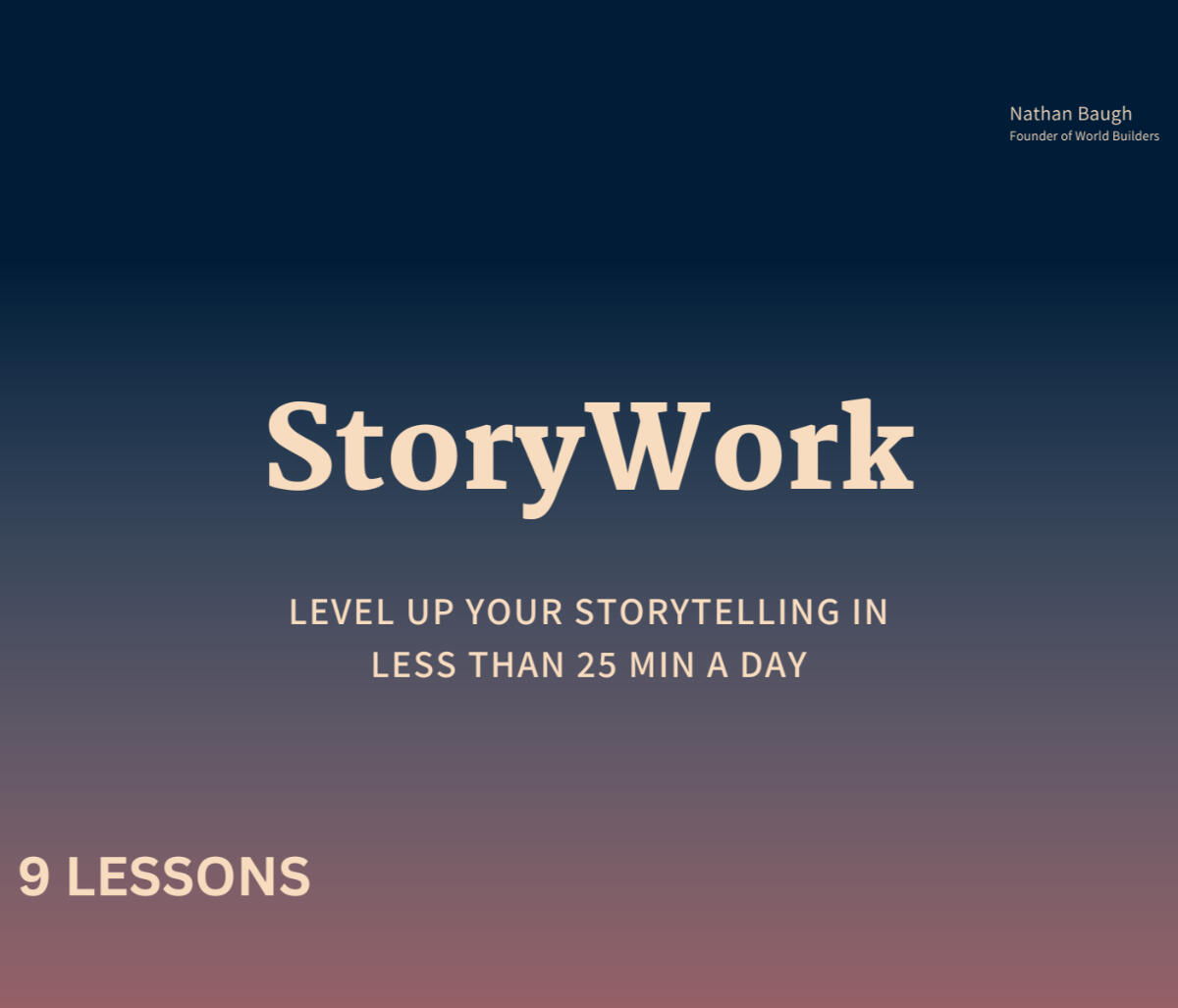- World Builders
- Posts
- Creativity Inc
Creativity Inc
Pixar's 22 Rules of Storytelling (Part 3)
Hey friends,
Happy almost Halloween 🎃
Today, we’re wrapping up the last piece on Pixar’s 22 Rules of Storytelling – you can read part 1 and part 2 if you missed those.


Prompt: Moana telling a campfire story, digital art
The year is 2005. Disney Animation has produced dud after dud. It looks like a dying division – then it scoops up Pixar for $7.4 billion.
Then they made Ed Catmull (founder of Pixar) head of the Disney animation studio and seemingly overnight the culture shifted. Three quotes from Ed that sum it up:
“You are not your idea, and if you identify too closely with your ideas, you will take offense when they are challenged.”
“If you give a good idea to a mediocre team, they will screw it up. If you give a mediocre idea to a brilliant team, they will either fix it or throw it away and come up with something better.”
“When it comes to creative inspiration, job titles and hierarchy are meaningless.”
Here are the last 7 of Pixar’s Rules of Storytelling…
Pixar’s Rules of Storytelling: 16–22
16. What are the stakes? Give us a reason to root for the character. What happens if they don't succeed? Stack the odds against them.
A pointed threat is the most effective way to raise stakes. If you go with some version of “the world is ending,” the audience knows that’s pretty darn unlikely.
In The Dark Knight, the final scene only threatens two boats full of people. It feels legit – The Joker could carry out that threat and there still be a sequel.
Imagine the threat was, “destroy all of Gotham.” Everyone watching the movie knows that’s not happening.
In business, highlight the very specific painpoints your potential customers are feeling. They know their business can run without you (it has been!), but if you’re a painkiller, they’re more likely to get interested.
17. No work is wasted. If it's not working, let go and move on – it'll come back around to be useful later.
I ran across an idea (don’t remember where) I adopted recently – save your best scraps.
After I write my first draft, I cut down the total character count by 30-50%. But some of what I cut is actually good!
Those are the scraps to save. Then, after a few weeks, your scrap pile becomes a mound of untapped ideas.
18. You have to know yourself: the difference between doing your best and fussing. Story is testing, not refining.
The tiny details don’t matter until the overall narrative is nailed down. Pixar wants you to focus on iterating to improve the story, not making little tweaks that don’t move the needle.
19. Coincidences to get characters into trouble are great. Coincidences to get them out of it are cheating.
Make everything as hard as possible for your characters.
That may mean some unfair situations. But it does not mean lucky situations.
20. Exercise: take the building blocks of a movie you dislike. How do you rearrange them into what you do like?
You can do this with any story medium – book, song, comedy, pitch deck, landing page, doesn’t matter.
You can either pull apart, reverse engineer the stories you loved. Or, as Pixar suggests, take the ones you disliked and figure out how to make them better.
A few specifics to focus on:
Characters – did you care about them? Why or why not?
Arc – what changed from beginning to end?
Emotion – what did you feel (or not)?
21. You gotta identify with your situation and characters. You can't just write 'cool.' What would make you act that way?
A trick I like: if you’re struggling, write in the first person. Literally put yourself into the story (if you aren’t already).
Brandon Sanderson, who is way more accomplished than I am, recommends something similar. He writes a five-page monologue from the perspective of each of his main characters.
The purpose? To get inside their heads as much as he can.
22. What's the essence of your story? The most economical telling of it? If you know that, you can build out from there.
A common theme across great stories: focus.
The plot of Inception (below) fits on one page and the 5th & longest Harry Potter has just four subplots.
A rare find for my fellow movie nerds.
This is Christopher Nolan’s hand drawn plot map for his film Inception.
— Julian Shapiro (@Julian)
4:30 AM • Jul 15, 2022
Figure out the main point of your story and focus all of your energy (and words) into that.
Summary: There are no hard rules in storytelling – even Emma Coats, the Pixar employee who published these rules, said she should have named them guidelines.
As always, the most important part is to actually tell the story. Then look back at these tactics to give your story that extra juice it needs to be special.
– Nathan

Job Fair
If you’re in the market for a new role, I’m launching a Talent Collective in the coming weeks. 100% free for talent (you!) to get yourself in front of fantastic companies like N26, Stripe, and more. Perfect for you readers in growth, brand, sales, or product.

A message from... Me!
The interest in this tweet blew me away...
One way to become a better storyteller:
Take your two favorite authors. I recommend one non-fiction and one fiction.
Copy, word for word, their best work. Do it by hand.
I chose Paul Kalanithi and Neil Gaiman.
It’s the single exercise that improved my writing the most.
— Nathan Baugh 🗺️ (@nathanbaugh27)
3:06 PM • Jan 5, 2023
In my experience, there are two ways to get good at storytelling:
Study the greats (what this newsletter is for)
Practice, practice, practice
I do a lot of practice through StoryWork.
And so many of you liked, commented, and sent me DMs about the practice I decided to turn it into a guided course for you.
Check it out:

Storyteller's Finds
🗞️ Newsletter: More To That by Lawrence Yeo makes me think more than any other newsletter. His writing is beautiful and the topics he writes about are interesting. Try it free.
📜 Essay: “I’m Pretty Sure I Broke LinkedIn” made me laugh for five minutes straight.
📹 Podcast: Rick Rubin – In The Studio. I’ve binged tons of Rick Rubin content over the last two weeks. By far the best pod to go deep into the legendary producer’s life.
📙 Book: The Emotional Craft of Fiction by Donald Maass. I’m convinced the emotion evoked by a story is what more of us (myself included) need to optimize for.

